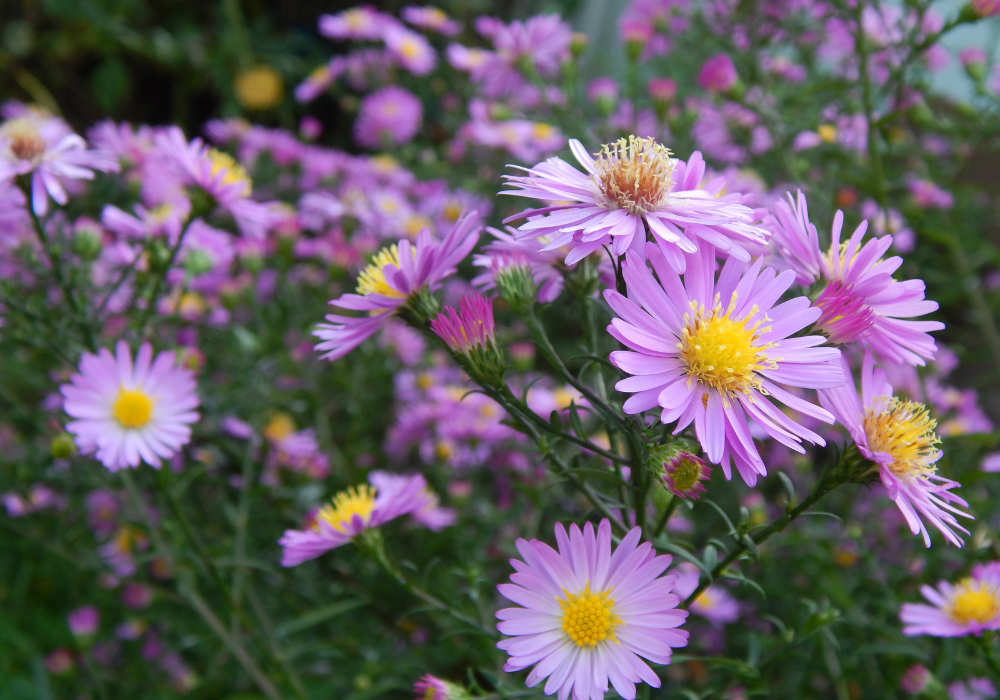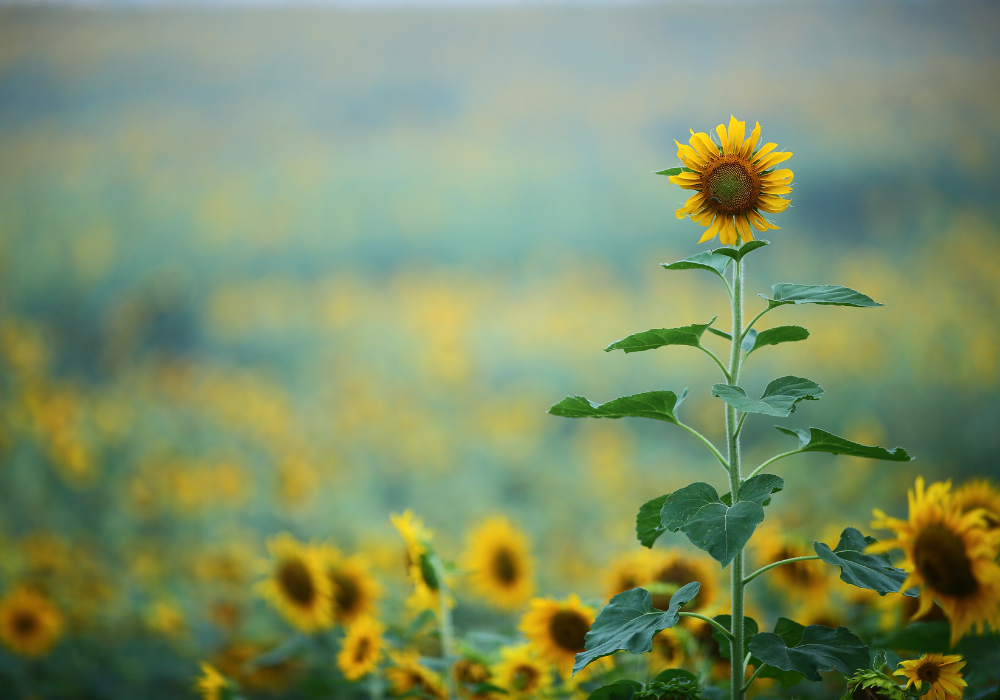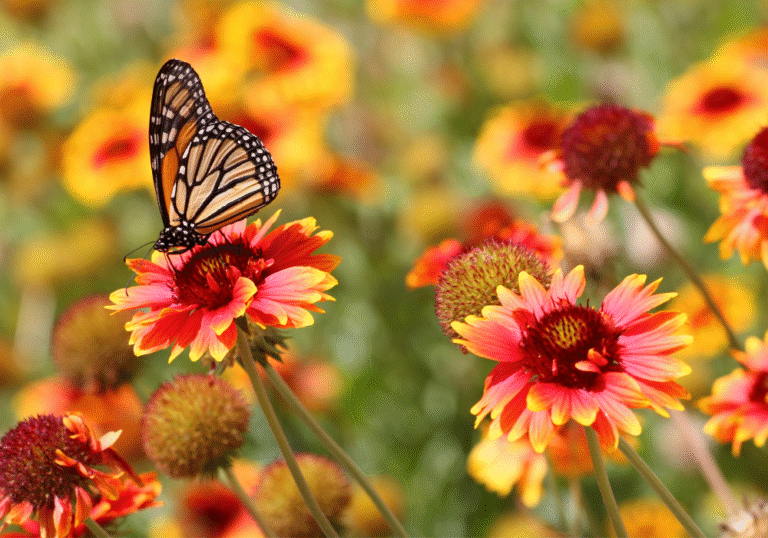#Plants #Attract #Butterflies #Garden
Last Updated on April 27, 2025 by April

Butterflies bring a burst of color and energy to gardens, making outdoor spaces feel more alive. They’re attracted to certain plants that offer the nectar and shelter they need to stick around.
Picking the right plants does more than just please butterflies—it helps boost biodiversity in gardens. If you want to see more butterflies fluttering by, it’s worth planting varieties that really appeal to them.
Butterfly Bush (Buddleja davidii)

Butterfly Bush is a deciduous shrub with long, flower-packed spikes that butterflies can’t seem to resist. Its nectar-rich blooms are pretty much a butterfly magnet.
It does best in USDA zones 5 to 9, loving full sun and soil that drains well.
The flowers have a lovely scent and come in purple, white, or pink. Snipping off faded blooms can stretch out the flowering season a bit.
Milkweed (Asclepias tuberosa)

Milkweed, or butterfly weed, is a big deal for butterflies—especially monarchs, since it’s a host for their caterpillars.
This perennial is happiest in USDA zones 4 to 9. It needs well-draining soil and lots of sun.
Its bright orange flowers show up from early summer through early fall, giving butterflies a steady food source. Plus, milkweed is tough and doesn’t need much fussing over.
Lantana (Lantana camera)

Lantana’s clusters of tiny, bold flowers pull in all sorts of butterflies. The blooms come in yellow, orange, pink, and red, and they stick around through the growing season.
It thrives in USDA zones 8–11 and prefers full sun with well-drained soil, so it’s great for warmer gardens or even pots. Once it’s settled in, it handles heat and drought without much trouble.
Coneflower (Echinacea purpurea)

Coneflower, or Echinacea purpurea, is a North American native perennial with purple daisy-like flowers that butterflies love in the summertime.
It grows in USDA zones 3 through 9 and likes full sun and well-drained soil. Deadheading helps keep the blooms coming, which means more nectar for butterflies.
Coneflower doesn’t need much once it’s established, and its sturdy stems make it a go-to for pollinator-friendly gardens.
Zinnia (Zinnia elegans)

Zinnias are annuals with bright, simple blooms that make it easy for butterflies to get to the nectar.
They’re low-maintenance and thrive in full sun, doing well in USDA zones 3 to 10.
Deadheading often brings more flowers, and more flowers mean more butterflies all summer. Zinnias come in a range of heights, so they fit just about anywhere—beds, borders, you name it.
Black-eyed Susan (Rudbeckia hirta)

Black-eyed Susan is a native wildflower with sunny yellow petals and a dark center, thriving in USDA zones 3 to 9.
It likes full sun and well-drained soil, making it a flexible pick for many gardens. The blooms are a reliable nectar source for butterflies.
Once established, it handles dry spells and doesn’t ask for much. A little deadheading can keep the flowers coming through summer.
Bee Balm (Monarda didyma)

Bee Balm, native to North America, sports bright red, pink, or purple flowers and grows in USDA zones 4 to 9.
Its colorful blooms are a favorite for butterflies, and it prefers full sun with moist, well-drained soil.
This perennial usually hits 2-4 feet tall and also brings in bees and hummingbirds.
Phlox (Phlox paniculata)

Phlox paniculata is a perennial with dense clusters of fragrant, colorful flowers. It’s suited to USDA zones 4 to 8.
Butterflies flock to its nectar-rich blooms, which last from mid-summer into early fall. Phlox likes well-drained soil and full sun, though it can handle some shade.
These plants can reach up to three feet and work well in borders or beds. Deadheading helps keep the blooms coming.
Verbena (Verbena bonariensis)

Verbena bonariensis stands tall with clusters of small purple flowers that butterflies find irresistible.
It grows in USDA zones 7 to 11 and prefers full sun and well-drained soil. People often tuck verbena into borders or use it as a filler among other plants.
Joe-Pye Weed (Eutrochium purpureum)

Joe-Pye Weed is a tall perennial with pinkish-purple flower clusters that bloom late summer into fall, drawing in plenty of butterflies.
It does well in USDA zones 4 to 9, preferring moist soil and tolerating both sun and partial shade.
It’s a solid choice for naturalized areas, borders, or pollinator gardens—reliable and always a hit with butterflies.
Goldenrod (Solidago canadensis)

Goldenrod is a North American perennial with vivid yellow flower clusters appearing from late summer into fall. Butterflies stop by for its nectar.
It’s hardy in USDA zones 3 to 9, likes full sun, and needs well-drained soil. Goldenrod grows easily and can spread fast, so keep an eye on it if you don’t want it taking over.
Aster (Symphyotrichum novae-angliae)

Aster (Symphyotrichum novae-angliae) is a perennial that blooms late in the season with star-shaped flowers in purple, pink, or white—just when butterflies need nectar most.
It grows in USDA zones 4 to 8, doing best in full sun and moist, well-drained soil.
Asters are low-maintenance and keep the garden lively when other blooms have faded.
Marigold (Tagetes erecta)

Marigolds are famous for their bright yellow and orange flowers and grow in USDA zones 2-11.
Their vivid blooms and nectar bring in butterflies, and they prefer full sun with well-drained soil.
Besides adding color, marigolds can help keep certain pests away with their strong scent.
Sunflower (Helianthus annuus)

Sunflowers are annuals with tall stems and big yellow blooms, best in USDA zones 4 to 9.
They offer tons of nectar and pollen for butterflies. Full sun is key for strong, healthy plants and frequent butterfly visits.
Sunflowers are easy to start from seed and add both color and pollinator action to gardens.
Verbascum (Verbascum thapsus)

Verbascum thapsus, or common mullein, is a tall biennial with yellow flowers. It’s native to Europe, Asia, and northern Africa, but it’s made itself at home in North America too.
Butterflies visit its late spring and summer blooms. It likes well-drained soils and full sun, thriving in USDA zones 3 to 9.
The tall flower stalks offer butterflies a handy landing spot. Verbascum fits right into wildflower gardens or mixed borders.
Lavender (Lavandula angustifolia)

Lavender is a perennial herb with fragrant purple flower spikes that butterflies can’t resist.
It’s best suited to USDA zones 5 to 9, loving full sun and well-drained soil.
Lavender is pretty easygoing and works in gardens or containers. The flowers usually show up from late spring into early summer.
Coreopsis (Coreopsis lanceolata)

Coreopsis, or lanceleaf tickseed, is a perennial with bright yellow blooms, thriving in USDA zones 4 to 9.
It offers plenty of nectar and a good landing spot for butterflies. Coreopsis likes full sun and isn’t picky about soil.
This plant is easy to care for and drought-tolerant, so it’s a solid pick for new gardeners hoping to help pollinators.
Painted Lady Bush (Buddleia alternifolia)

Painted Lady Bush, or Buddleia alternifolia, is a deciduous shrub with arching branches and cascades of fragrant lilac flowers that bloom in late spring or early summer.
It’s especially appealing to butterflies, including Painted Ladies, thanks to its nectar-rich blossoms. USDA zones 5 to 8 suit it best.
It likes full sun and well-drained soil. Pruning after flowering helps keep it tidy and encourages more blooms.
Climbing Hydrangea (Hydrangea anomala)

Climbing Hydrangea is a deciduous vine with showy white flower clusters that attract butterflies during summer, offering nectar and a bit of shelter.
It grows in USDA zones 5 to 9 and prefers partial to full shade with moist, well-drained soil. Climbing Hydrangea can cling to walls, fences, or trees, adding vertical interest to garden spaces.
Phacelia (Phacelia tanacetifolia)

Phacelia tanacetifolia is known for its feathery, fern-like foliage and those lovely clusters of pale blue to purple flowers. You’ll spot it in plenty of pollinator gardens, since it’s a favorite for attracting all sorts of butterflies.
This annual does well across a wide range—USDA zones 3 through 10. Sure, it likes full sun and soil that drains well, but honestly, it’s not too fussy. The nectar-rich blooms stick around for most of the butterfly season, making them a reliable snack for visiting pollinators.


